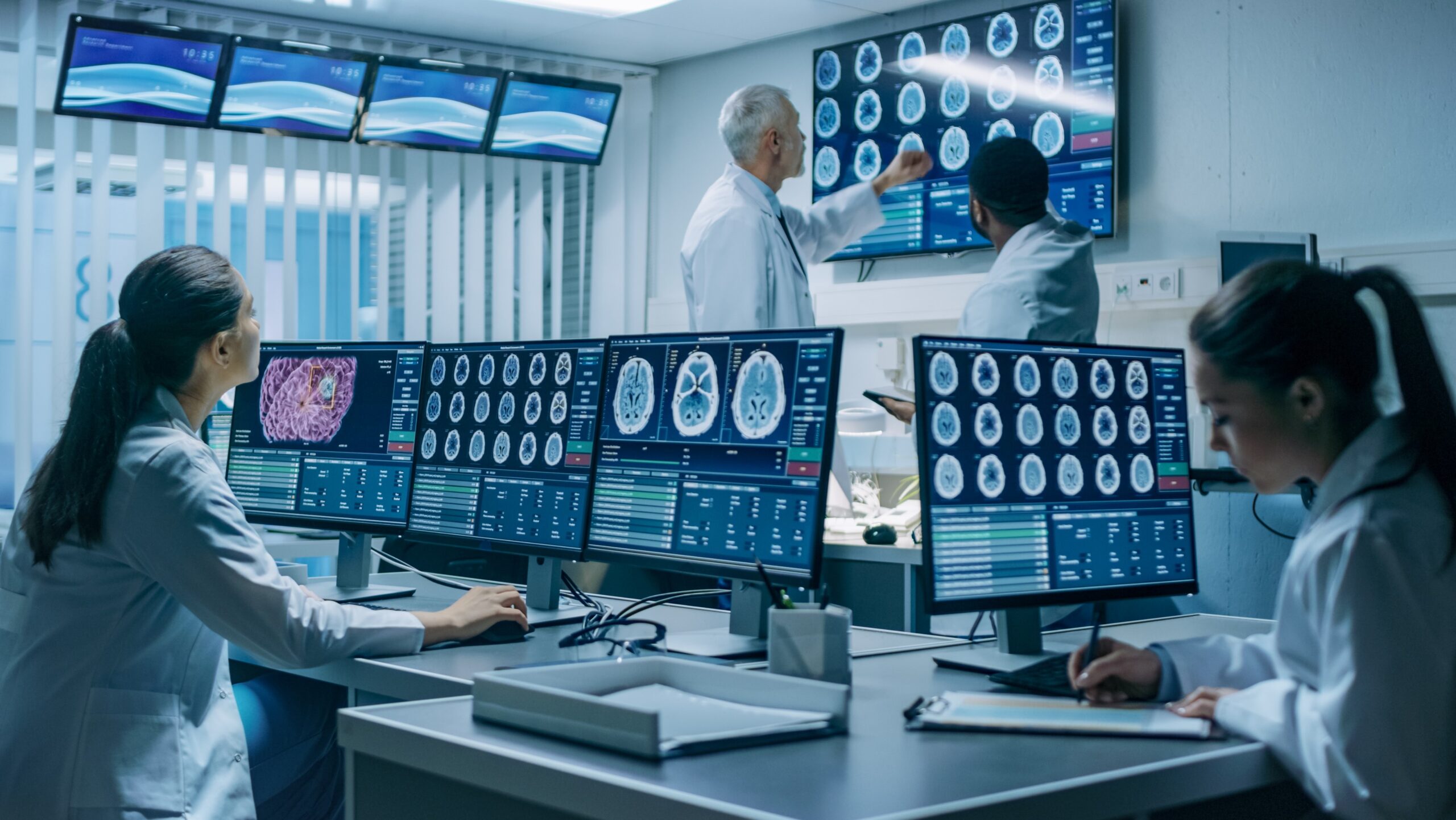

Emerging Trends in Rheumatology: Imaging, Technology and AI
The virtual conference format is no doubt a hallmark of 2020. This year is like no other in embracing the use of technology, virtual platforms, self-monitoring and AI when it comes to caring for patients or running clinical studies. As American College of Rheumatology (ACR) annual meeting 2020 completes, we wanted to pick out any other trends in imaging, AI and technology, especially within rheumatology space.
COVID19
A number of abstracts ACR2020 were dedicated to caring for patients during Covid19 lockdowns. The ‘DMARD Changes for Patients with Rheumatoid Arthritis in the US During the First Three Months of the COVID-19 Pandemic’ looks at patients with RA and changes in their medications, who made substantial changes to their medication use during the pandemic. Very often (almost 50%), decisions on DMARD decrease or discontinuations were made without physician guidance, and all types of medication changes after ACR recommendations were made with increased physician guidance. The effects and implications of these changes are still to be assessed.
Several abstracts spoke about evolution of rheumatologists’ practices and adaptation of telemedicine in response to covid19. A few to highlight: ‘The Evolution of Rheumatologist’s Practice in Response to the COVID19 Pandemic’ and ‘Impact of Telehealth Implementation on Practice Patterns and Electronic Health Record Utilization During COVID19’.
We noticed an increased attention to the smartphone apps for self-monitoring disease activity. We believe that Telemedicine and Safe Telemonitoring, resulting in self-measurement of disease activity, will play a major role in reducing the number of outpatient visits to a physician and hence reducing the burden on healthcare system. more
ACR 2020 presenters spoke about mobile apps and digital innovations to monitor disease activity in RA patients. Several studies highlighting user experience with a voice-enabled smartphone app to virtually monitor disease activity and collect ePROs were presented. A poster presentation highlighting preliminary data on the performance of 3 novel Smartphone sensor-based measurement tools using the Psorcast iOS app to measure Psoriatic Arthritis symptoms, is a part of the congress.
As per clinical development programs, virtual site visits and cloud based enabled data management solutions will play an increasingly important role in the management and control of the trial data.
AI in Rheumatology Imaging
Based on the enthusiasm at the congress, there is no doubt that AI in rheumatology imaging will play an extensive role in the future of clinical research. To analyze medical images (MRI, CT, Xrat) with higher efficiency and efficacy, a considerable effort has been put by medical computer scientists into the development of AI methods to perform image processing.
It seems that COVID pandemic helped to further accelerate use of AI in discovery and development of novel therapeutics. Aside from our own abstract on ‘Role of Artificial Intelligence in Assessment of Peripheral Joint MRI in Inflammatory Arthritis: A Systematic Review and Meta-analysis’, we noticed several dedicated to imaging data analysis.
In the ongoing ACR 2020 congress, an exploratory study, which is assessing the performance of a deep-learning models for scoring and detecting joint space automatically versus the conventional measurement criteria. Another technology called HandScan is currently developed to measure inflammation in hand joints using optical spectral transmission within 5 minutes, without taking time of a health professional.
A few pilot studies using various AI-driven methodologies for X-ray data analysis:
- An Artificial Intelligence (AI) Assistant Identifying Spinal Diffuse Idiopathic Skeletal Hyperostosis on Plain X-rays: A Pilot Deep Learning Study
- Development and Validation of an Artificial Intelligence Approach for the Detection of Radiographic Sacroiliitis
When it comes to X-ray assessment, the speed and sensitivity of the analysis are the key. Whereas analysis of MRI or more advanced imaging modalities is focused on the ‘depth’ of information that can be extracted to understand the treatment efficacy earlier or better.
More and more studies utilize quantitative imaging and quantitative scoring methodologies in CT, Ultrasound and MR.
Just a few to highlight:
- A Computer-Aided Diagnostic System for Quantitative Scoring of Extent of Interstitial Lung Disease (ILD) in Dermatomyositis/Polymyositis Associated ILD. More info
- Quantitative Ultrasound of Temporal, Axillary and Subclavian Arteries to Monitor Tocilizumab Treatment in Patients with Newly Diagnosed Giant Cell Arteritis: A 24 Week Analysis
- Use of Peripheral Quantitative Computed Tomography in the Assessment of Bone Mineral Density in Anti-TNF-treated Rheumatoid Arthritis and Ankylosing Spondylitis Patients
- Long-term Efficacy and Safety of Intra-articular Sprifermin in Patients with Knee Osteoarthritis: Results from the 5-Year Forward Study
- Exploring Novel Tenosynovitis and Combined Inflammation Imaging Outcomes: Results from a Randomized Controlled Trial in Early Rheumatoid Arthritis
An important use of imaging and technology is in the cardiovascular risk assessment in rheumatoid arthritis patients. Patients suffering from psoriatic arthritis are at a high risk of developing cardiovascular disease. The carotid ultrasound is non-invasive and useful in the detection of subclinical atherosclerosis. It measures both carotid plaque (CP) and carotid intima-media thickness (cIMT). Multiple cross-sectional studies involving cardiac biomarkers (and their relation to Cardiovascular Events in Patients with Psoriatic Arthritis and Psoriasis), and case studies related to cardiac risk assessments using carotid ultrasound imaging are currently ongoing and are being presented this year in ACR 2020.
Patient-reported Outcomes in Clinical Trials
Many of the ACR’s talks and posters focused on the increasing role of Patient-Reported Outcomes (PRO)in clinical trials. These are an essential step in assessing the treatment response. Self-assessments of pain, global health or disease activity, and physical function are included in the calculations of the American College of Rheumatology (ACR) responses. Recent advancements in PROs assessment, with additional patient-valued aspects of disease in recent RA randomized clinical trials (RCTs), mainly fatigue, have resulted in increased opportunities for developing more robust PRO measures by identifying new biomarkers to help in diagnosis and better decision-making for the patients, in the future.
Multi-omics: Genomic, Phenomics, Proteomic Predictors
Imaging never stands on its own in the disease assessment or understanding of the patient response. Multi-omics approach, that brings together genomics, proteomics and radiomics will ultimately support early effective decisions in drug development and clinical practice.
Both environmental and genetic factors contribute to RA. Studies show that approximately 60% of RA cases are inherited, and approximately one-third of these cases may involve polymorphisms at HLA loci. non-HLA genetic loci, showing the risk of developing RA PTPN22, IL23R, TRAF1, CTLA4, IRF5, STAT4, FCGR3A, IL6ST, IL2RA, IL2RB, CCL21, CCR6, and CD40.
Studying the roles of proteins encoded within each locus may contribute to our understanding of disease pathways. Loci showing stronger association with disease risk contain genes encoding. PTPN22 gene shows the strongest association with the risk of RA.
Proteomics gives information about changes in protein localization, gene expression, protein-protein interactions, or post-translational modifications that can be impossible to obtain using other methods. Any of the above changes in a gene can affect protein function and thereby contribute to disease. Multiple clinical studies identifying protein fragments and protein markers, using Machine Learning, are ongoing to differentiate Patients with Psoriasis-Arthritis from Those with Psoriasis Without Psoriatic Arthritis.
We look forward to ACR’2021! Hopefully, in a traditional face to face format!
Engage with our team:
Dr. Olga Kubassova, CEO: www.linkedin.com/in/olgakubassova/
David Chia, CCO: https://www.linkedin.com/in/jahyungdavidchia/
About Image Analysis Group (IAG)
IAG, Image Analysis Group is a unique partner to life sciences companies. IAG leverages expertise in medical imaging and the power of Dynamika™ – our proprietary cloud-based platform, to de-risk clinical development and deliver lifesaving therapies into the hands of patients much sooner. IAG provides early drug efficacy assessments, smart patient recruitment and predictive analysis of advanced treatment manifestations, thus lowering investment risk and accelerating study outcomes. IAG bio-partnering takes a broader view on asset development bringing R&D solutions, operational breadth, radiological expertise via risk-sharing financing and partnering models.
Learn more: wp1.ia-grp.com
Reach out: imaging.experts@ia-grp.com
Follow the Company: Linkedin
